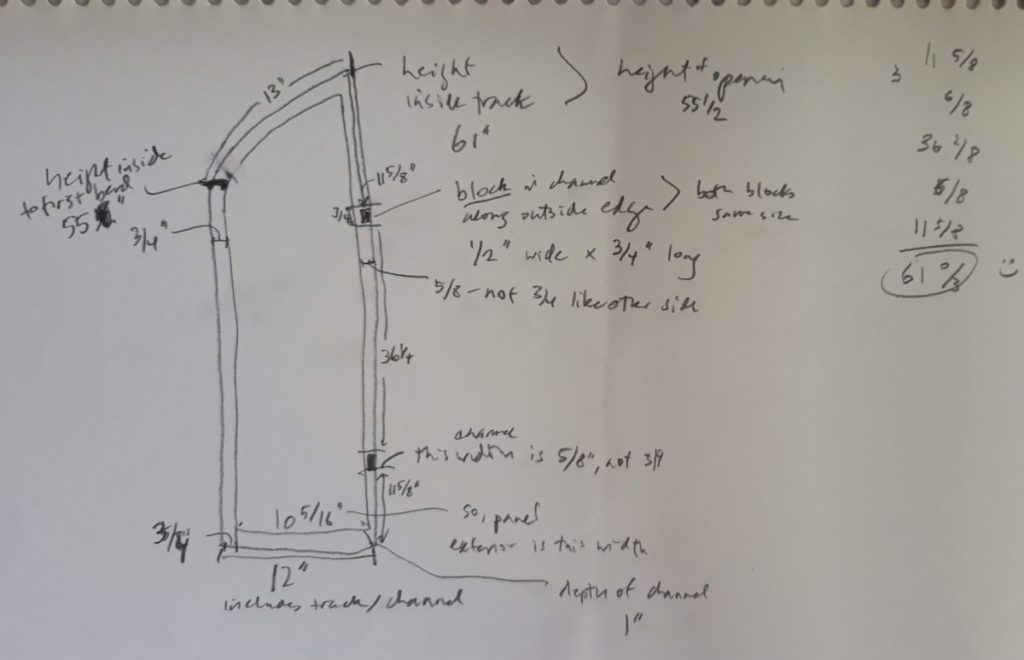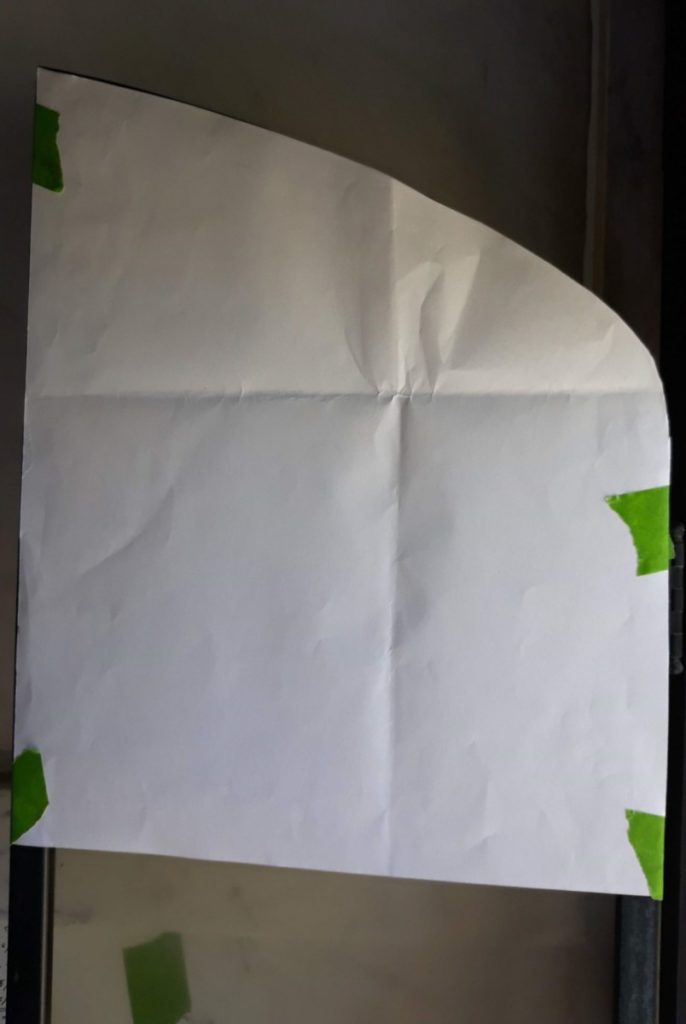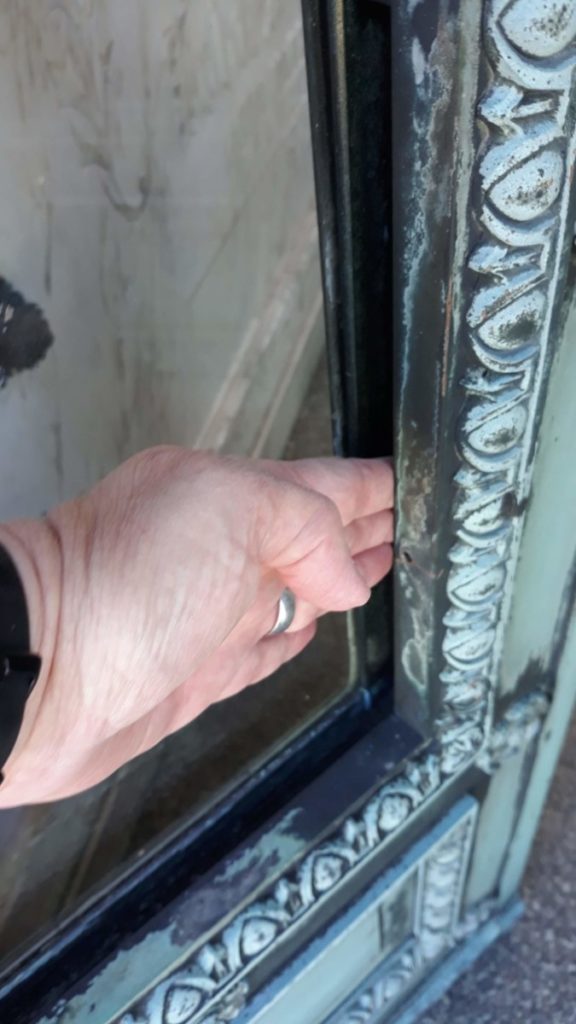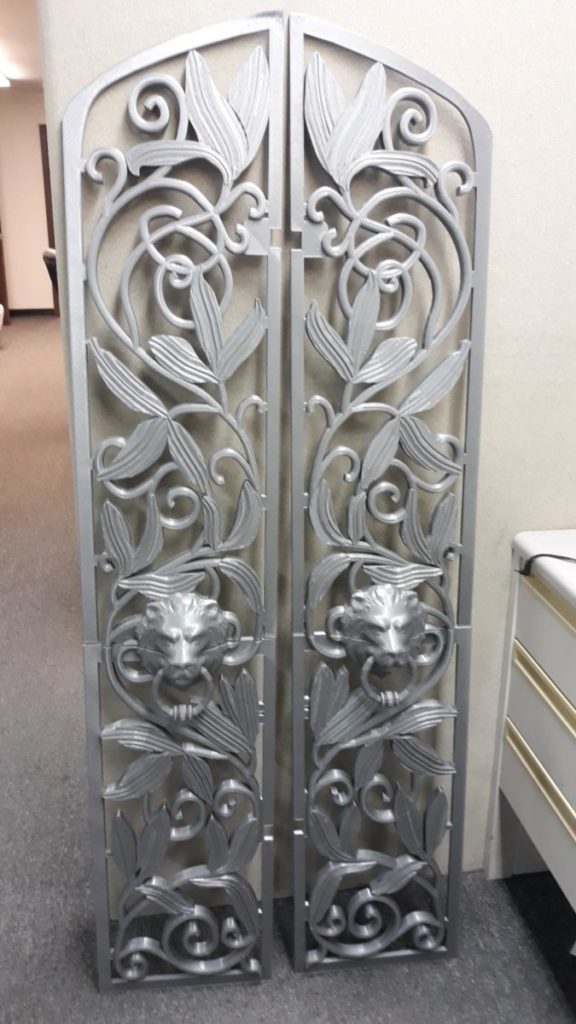A Story about Family, Crime, Devotion, and Technology
By Kathy Byrne
Family
After my great grandfather on my mother’s side, Philipp Lautenschläger, died in New York in 1924, his family erected a mausoleum in a Lutheran cemetery in Middle Village, Queens, New York, in which to bury (actually, inter) him. He and his wife, Marie (née Ensinger), had emigrated from Frankfurt, Germany, and entered the U.S. through Ellis Island. He opened a butcher shop in a small apartment building in Manhattan’s lower east side, then known as Germantown, and apparently used the shop’s profits to buy all eight apartments in the building. When the mausoleum was completed in 1925, it had eight crypts, four on either side. It was granite block construction, with white marble panels inside that would eventually bear old German-style script memorializing each person interred there, a stained-glass window depicting Jesus as a shepherd, and the most beautiful patinaed bronze and glass doors.
Over the years, my great grandfather and great grandmother, my grandfather (Philip Geil), my grandmother (Marie, née Lautenschläger), my grandmother’s brother, and my father died and were interred there. (Philip Geil had come to the U.S. from Pfeddersheim, Germany. My wife Barbara is from St. Martin, Germany, only a 25-minute drive from Pfeddersheim.) After my father died in 1969, my mother (Phyllis, named after her father and grandfather), my sister and I would drive from southern New Jersey to the cemetery every summer to clean the mausoleum inside, take care of the grass and ivy, and plant flowers in the planters. After the work was done, we would go into Manhattan for a Broadway show or some other special event. After I left home for college, though, I only infrequently went to the cemetery with my mother.
Then, by sad coincidence, on the same day in early November 2007, both my mother and my stepfather died. They were then interred in the last two spots in the mausoleum. It seemed to become my job to maintain the mausoleum, and that was fine with me, as it was really the only thing I could do for my mother anymore. Every year between 2008 and 2019, I travelled from Colorado to the cemetery around my mother’s birthday at the end of May to clean the mausoleum inside, take care of the grass (no more ivy), and plant flowers, and then I went into Manhattan for a show or museum or some other special event. Despite the sadness of the mother’s death, I’ve enjoyed this tradition.
Crime
But in early May of 2019, I got a call from a cemetery employee whom I had befriended. Brian told me that the decorative panels in the doors to the mausoleum had been stolen. I was completely heartbroken. My family burial place been desecrated by thieves, and I had lost those beautiful bronze panels that I loved so much throughout my life. The theft was actually part of a tragic series.
Thieves were stealing bronze door panels (and sometimes the bronze doors themselves!) from mausoleums all over Queens to sell for scrap value, then about $2 a pound, to support their drug habits. The apparent ring leader was eventually caught, but NYPD was sure the panels would have been sold and melted down quickly, so they were gone forever.

Devotion and Technology
After grieving some more, the next week I began exploring options to replace the panels. I could not leave the glass panes behind the now-gone panels unprotected. Recreating the panels in bronze seemed a poor choice, as they could simply be stolen again and would likely now be so costly to recreate that my mother would surely disapprove of such an extravagance. But, in one of my most imaginative moments, I wondered whether 3D printing – about which I knew literally nothing – might be an option.
I found 3D Printing Colorado in Broomfield on the internet, called them, and went for a visit. Carter thought that he could help me recreate the panels in “printed” three-dimensional plastic and that it was an interesting project. Often, their clients have the original item they want 3D printed so it can just be 3D scanned, but here we would have to recreate the panels from photographs and measurements. Carter was up to the task. Fortunately, because I loved the doors so much, I had lots of good photos.
At the end of May, I went to NYC for my previously planned cemetery visit. It was crushing for me to see the mausoleum without the door panels. But then I got busy measuring every possible dimension of the panel frames, made lots of notes and cut out of the angle at the top of the panels, and took photos and video for context. I cut cardboard to cover the glass for the time being. And, of course, I cleaned, etc.



Afterward, Barbara went over the measurements with me several times. This was an annoying task for her, because the dimensions were both planned and measured in inches, and Barbara thinks in centimeters. She was so right: the fractions of inches were beasts to deal with on this project.
The project moved slowly: the shop’s 3D printers were 1/2 inch too narrow to print the 12-inch-wide panels, so we had to reduce the width of the panel frames by that much; then Carter changed jobs so we got other (awesome) 3D Printing employees (Nick and Nick) up to speed; then the shop got larger printers so we had to scale the frame measurements back to the original size.
In the meantime, the pandemic hit: I would not visit the cemetery in 2020. But, we continued to make slow progress. Barbara joined me for meetings with Carter and then the Nicks, and she reviewed the 3D drawings they sent before printing. In August 2021, the panels were finally printed! Yes, they were 3D plastic, and in two pieces each, but they looked really good! I nearly cried when I first saw them. The attending Nick took a photo of me and the panels to send to Carter, which I thought was sweet, and I gave Nick a big hug

I completed the finishing work on the panels, scraping off some extra threads and tiny bumps of plastic. Earlier, I had mailed paint color chips to Brian at the cemetery, and he brought about 10 people out to the mausoleum to pick the green-blue (patinaed bronze) color that best matched the doors. Seven out of 10 chose the same color, and, in that color, I ordered custom-colored spray paint, as the Nicks suggested. I set up a cardboard spray painting studio on the back deck. Barbara learned how to spray paint from You Tube, and she applied many coats of primer, then color, then sealant.
The next challenge was to get the panels to New York. I did not want to ship them because the panels could be broken or delayed, and we would be there for only a weekend. Eventually, I decided the only choice I could live with on an emotional level was to buy the panels a seat on the airplane (which is not as easy as it sounds). Then I meticulously wrapped the panels using repurposed cardboard and all of the bubble wrap we could find in the garage. We gathered tools and the foam tape we had chosen for the installation, and, on Friday, September 10, 2021, we headed to the airport with our precious cargo.
We went to the cemetery on Saturday, and then the Moment of Truth was upon us. Barbara unwrapped the panels and set them in the door frames for an initial check. Thank goodness, they fit very nicely! The color was an excellent match, the best of the available choices. Barbara’s installation plan went very smoothly. After much measuring, planning, designing, emailing, meeting, double-checking, and two years of angst, the mausoleum finally looked very much like it did before the theft.
I feel very peaceful about this project, now that it is completed. It was way outside my comfort zone. I am grateful to Barbara for sharing her awesome skills, and to Carter and the Nicks at 3D Printing Colorado for their excellent work and their patience. I think my mother would be very happy with the new door panels, and that makes me very happy.
